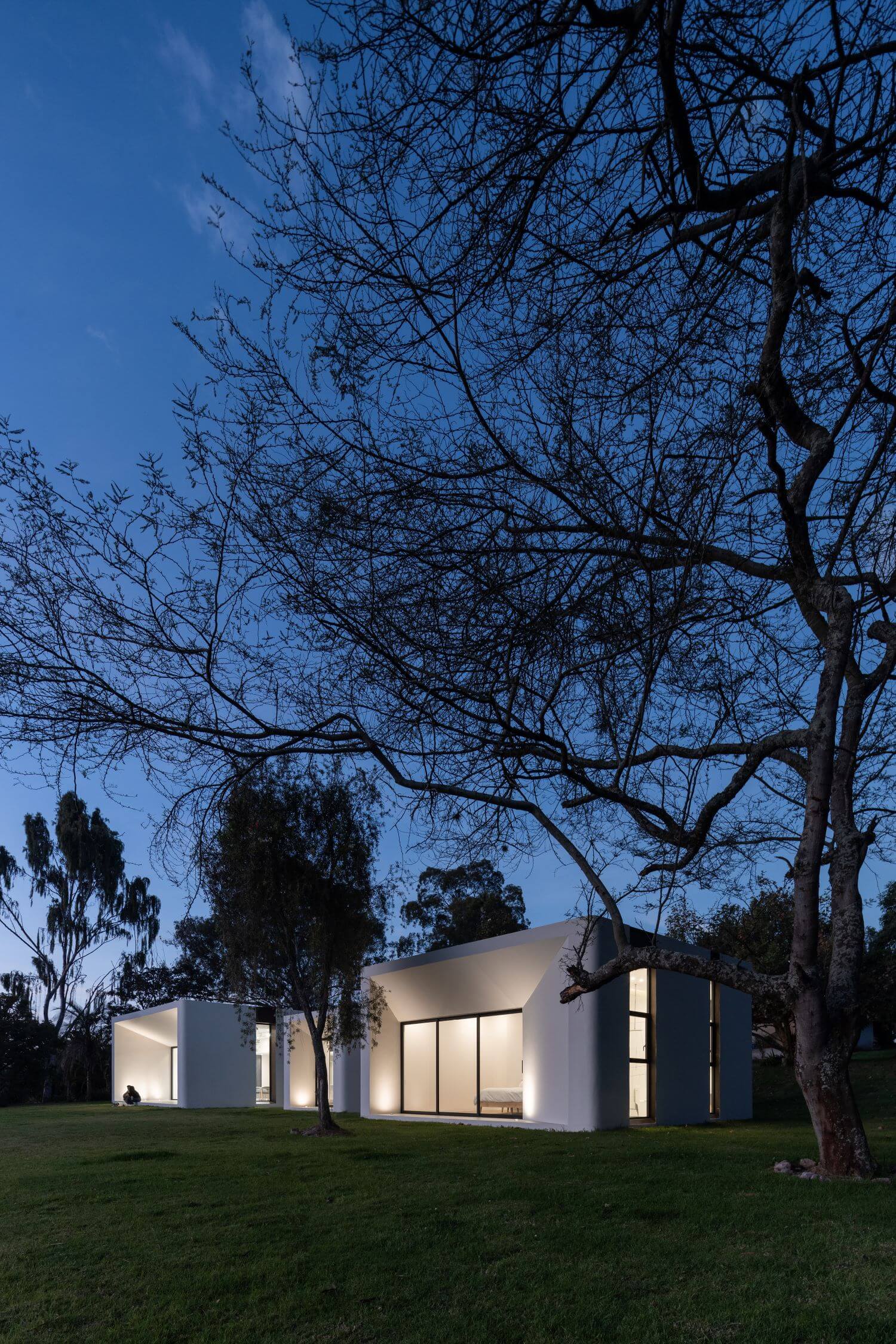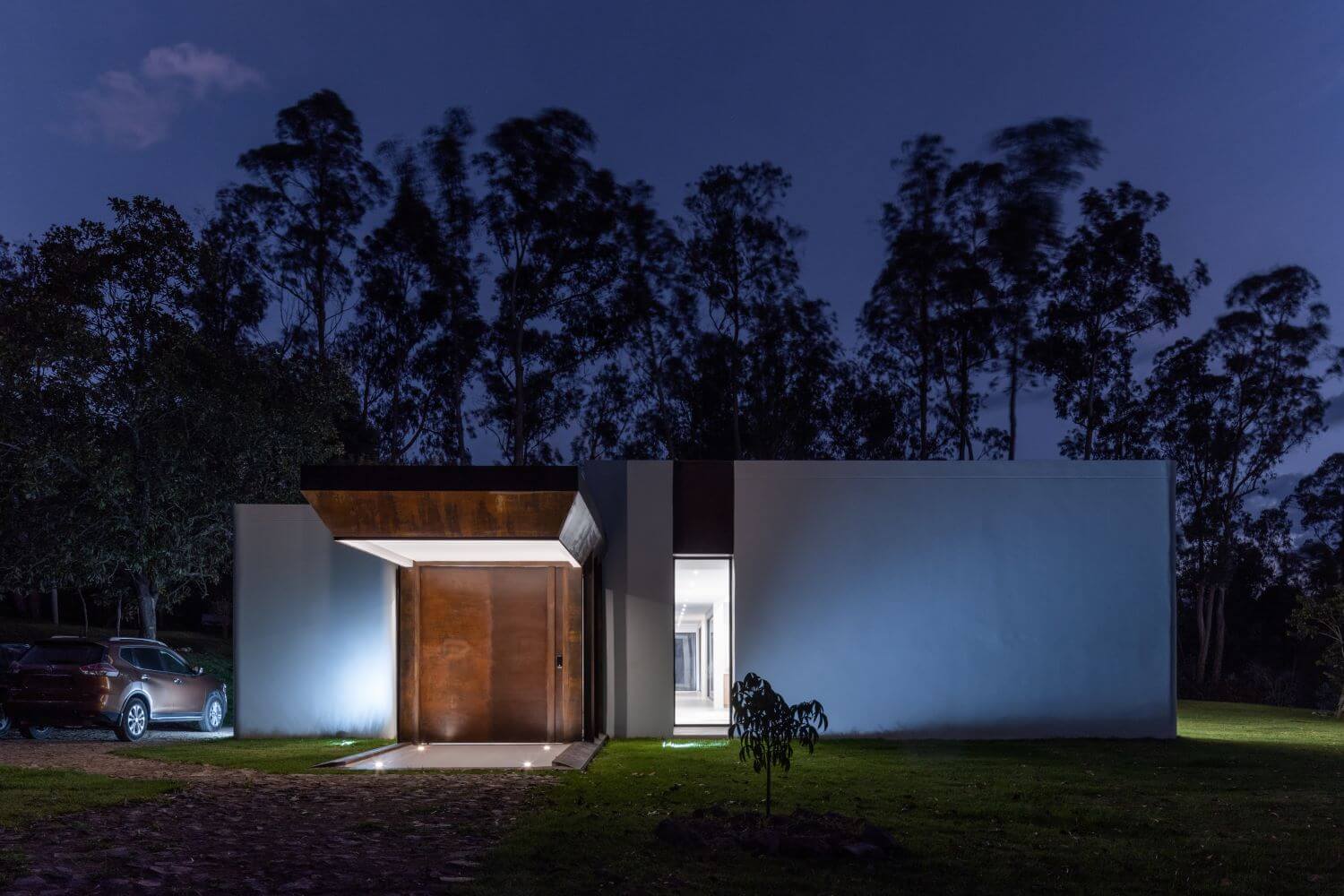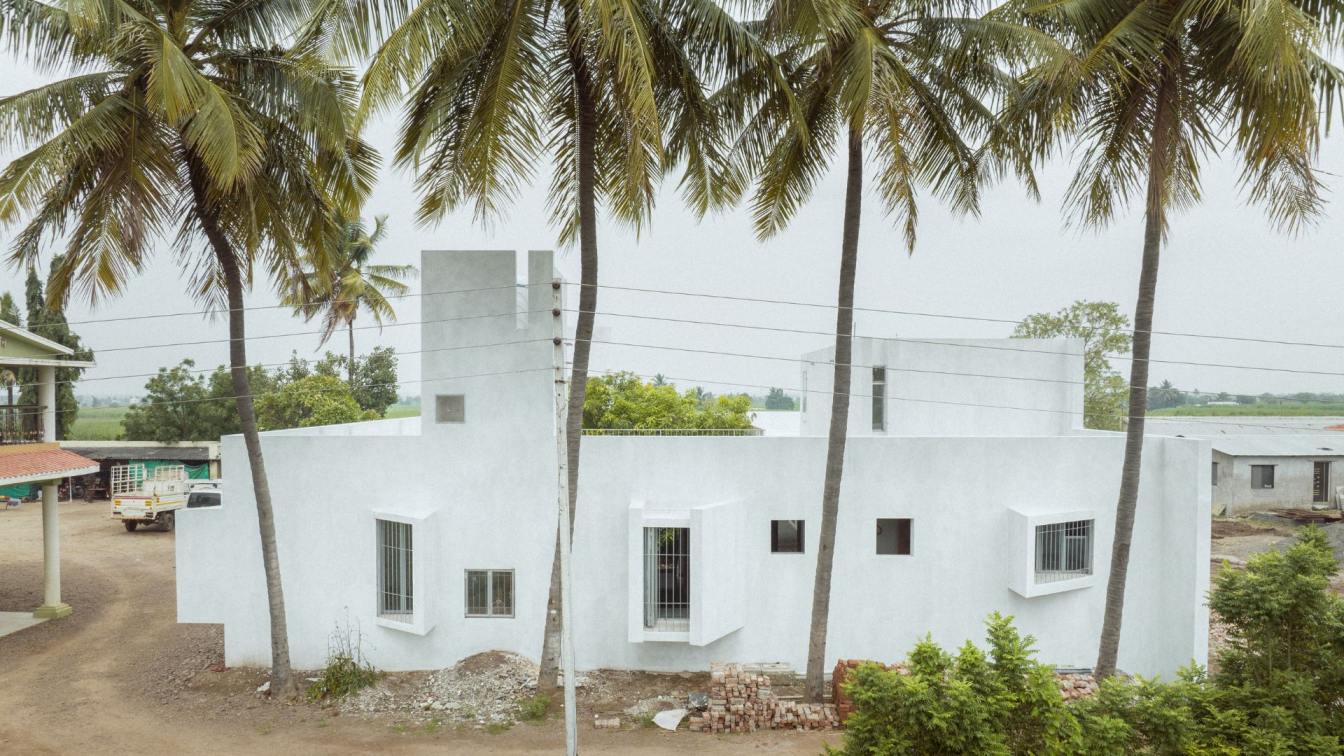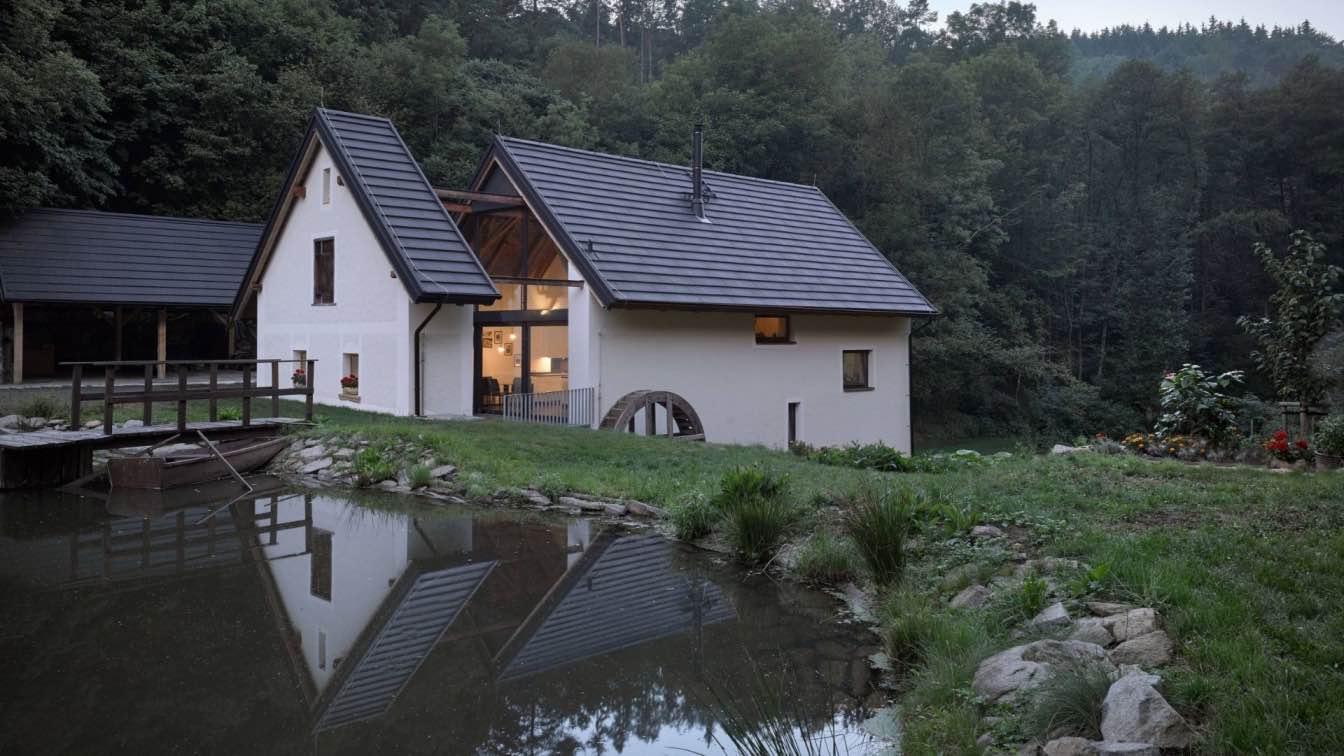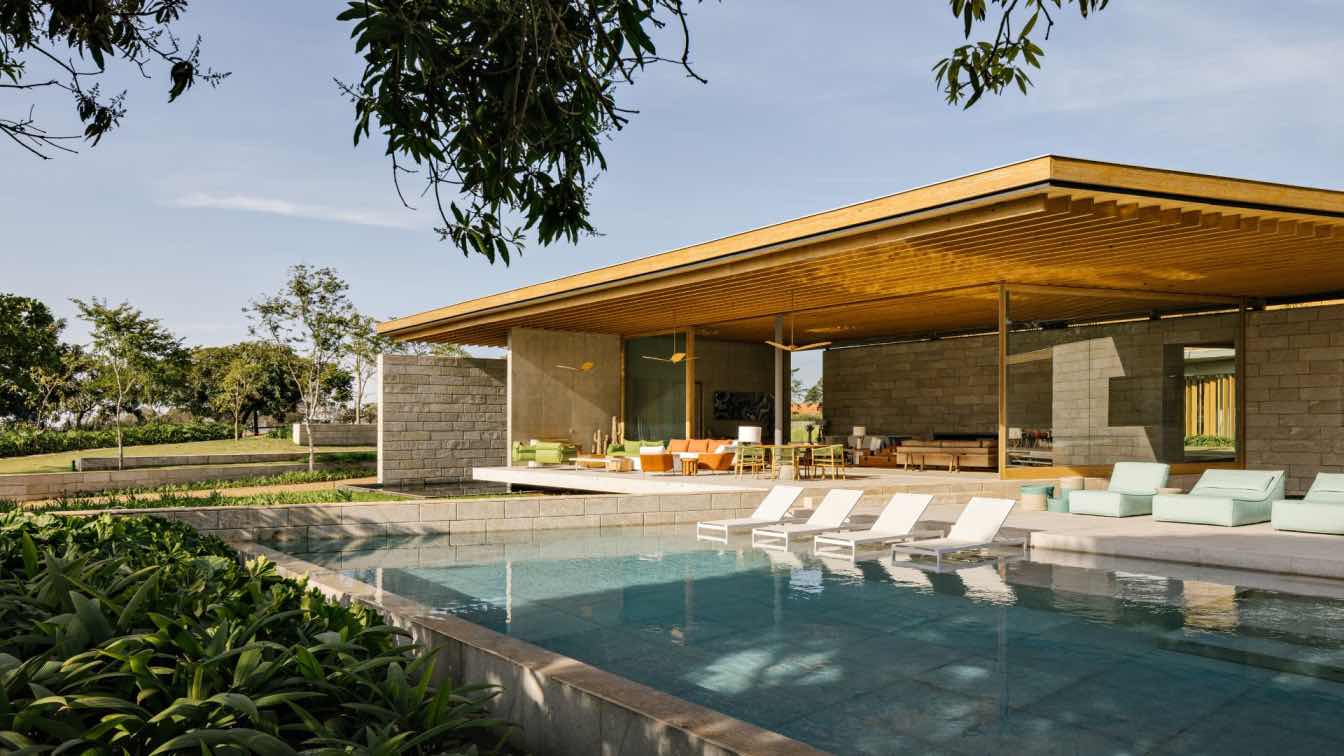Caá Porá Arquitectura: Magnolia House is an alternative response to the common housing enclave. It seeks to understand it from the perspective of a series of spaces that are inhabited by a family, rather than from the perspective of an architectural element. Implanted in a suburban context full of nature and away from the urban environment, it’s a symbolic volumetric composition that represents each space of the house as a part, with its own specific characteristics, that relates to the environment and to the whole.
A surface area of 350m2 designed on a single floor, proposes to partition the program into five volumes, giving absolute independence to the particular activities that each room encompasses. The different heterogeneous volumes are interwoven with the landscape, generating expansions and transparencies that turn the greenery of the context into part of the interior spaces. The articulating spaces that connect the main areas are a transition that make the user feel like they are walking freely in the garden, while actually navigating the interior.
The location of each room in relation to the sunlight responds to the activity for which they were designed. Private and service spaces are aligned with the morning sun in order to enjoy the first hours of light at the beginning of the day, while social and family rooms enjoy the afternoon sun, coinciding with the moment when everyone has returned home from their activities. The concave spaces between the architectural object and the landscape are visual finishes that generate transparencies throughout the house, reinforcing the idea of achieving habitable objects of sculptural nature that are exempt from their environment.

Each room accommodates a specific activity that responds to different requirements, such as level of privacy, room capacity, sunlight, ventilation, interaction with the exterior and adjacent spaces. These results in the internal spaces being modified in height, width, and length as well as in the type of internal coverings, to achieve the personality that corresponds to each one. Additionally, each volume holds an opening. In the case of social areas, they are visually interconnected through these opening, while private spaces have visual access to the outside.
The materiality of the project is very simple. Smooth continuous planes, painted white, with softened lines at the vertices, reinforce the idea of an artificial object that is foreign to the original context of the site where it is implanted. The translucent bridges that connect the spaces, decorated with rusted steel sheets on the horizontal planes, play with a more organic palette, and reinforce the overall horizontality.
The project proposes a single-family home in a very abstract way, in which the functionality of the spaces, their internal relationships, and the suburban context are extrapolated to generate a simple and straightforward architectural object, both in composition and materiality. Its organization allows for daily life events, whether simultaneous or independent, to take place without altering the general order, an act that is so necessary in today's families, where the individual and the common are of equal importance.















